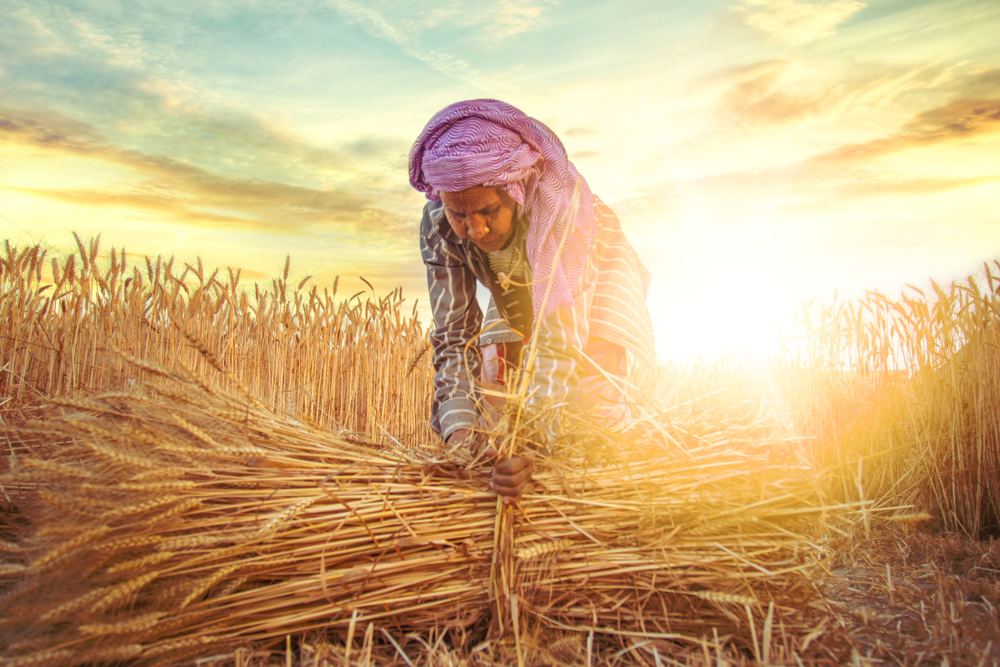Women are the foundation of the agriculture sector but are still playing an invisible role. They account for 70% of the total Indian agriculture workforce but the lack of control, ownership over the land, education, and gender disparity are some of the major aspects of the problems. Agriculture continues to engage and employ the female workforce but fails to give them an acknowledgment of employed or hired labor. To step up the pace of growth in India’s agricultural sector, there is a need to bridge the gap and give equal access to men and women.
[box type=”info” align=”” class=”” width=””]More than 400 million women engage in farm work globally but in the absence of any recognition, women are left out of rights related to access to rural credit, assets, technology, irrigation, and inputs. According to a factsheet by Oxfam, In India 17 crore women work in agriculture producing about 60-80 percent of our food and have only 13 percent of property rights.[/box]
To accelerate the pace of growth, legislation and institutional reform in agriculture are being made to address the contribution of women in agriculture. Equal inheritance rights to girls and coparcenary rights to daughters were granted as per The Hindu Succession Amendment Act (2005). The Ministry of Women and Child Development acknowledged the importance of land rights for women and drafted the National Women’s Policy in 2016.
Women farmers across the globe have always worked many more hours than men, although their work is not valued equally. Promoting and supporting women farmers’ cooperatives and collectives must be prioritised. Creating an agri entrepreneur model for the women farmers by equipping them with financial training, knowledge transfer on credit models, building market linkages, creation of Farmer Producer Organisations (FPO) to support them with mechanization, etc. Apart from women’s access to physical and financial resources, the attitude of people towards the role of women in agriculture also needs to improve. Giving women in agriculture the same support men receive, their contribution to yield would equal that of men.
[box type=”success” align=”” class=”” width=””]One such example of empowering women through agriculture is an initiative by Corteva Agriscience by creating an agri entrepreneur model to develop the tribal women farmers with financial training, knowledge transfer on credit models, building market linkages, creation of Farmer Producer Organization (FPO) to support them with mechanization etc. The company has also been supporting maize production in more than 2000 acres; annually marketing more than 700 tons of maize to different industries.[/box]
With an aim to improve rural livelihoods through market-oriented interventions, Corteva is focused on promoting agri-entrepreneurship, especially for women, by supporting FPOs which includes training on agricultural methods, providing access to multi-brand agri inputs, crop advisory to create market linkages, and an end-to-end value chain. To further help women and strengthen the FPO business, the company is also providing financial support towards agri inputs. These FPOs have leveraged the strength of collectivization, assisting farmers with plenty of opportunities to become key stakeholders in the ag value chain. As a result of these efforts, the farmers in these regions have better access to quality input, technology, credit, and better marketing linkages.
According to the Food and Agricultural Organization (FAO), empowering women through land and ownership rights has the capability of raising total agrarian output in developing countries by 2.5 to 4 percent and can reduce hunger across the world by 12-17 percent. Indian women need to be empowered for building a stronger and more resilient agricultural practice. Women farmers play a catalytic role towards the achievement of transformational economic, environmental, and social changes required for sustainable development. We must empower women farmers at the grass-root level by providing them with all the necessary tools, knowledge, and support.



